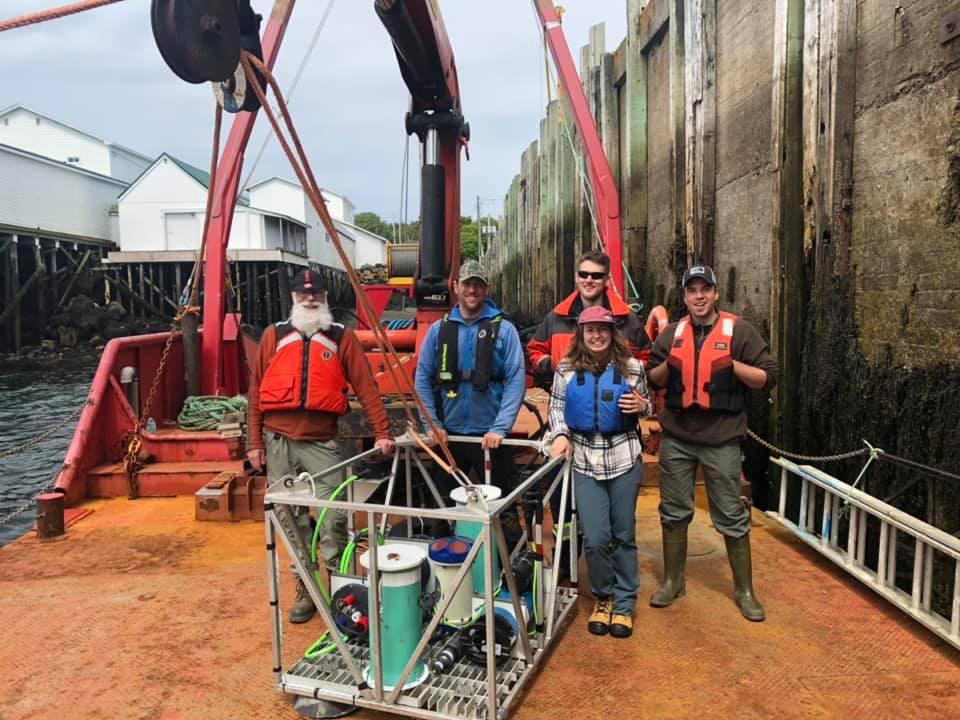Acoustic Doppler Aquatic Animal Monitoring (ADAAM) project
A Discussion with Greg Trowse
The Acoustic Doppler Aquatic Animal Monitoring (ADAAM) project is advancing research led by Dr. Len Zedel of Memorial University with the support of Nova Scotia firm Luna Ocean. Greg Trowse of Luna Ocean took some time recently to respond to a few questions, sharing details of his collaboration with Dr. Zedel, talking about the importance of this work and what he hopes to achieve moving forward.
Can you explain the work being done through the ADAAM project?
This project involves testing and validating the use of acoustic Doppler current profilers (ADCPs) for marine life detection. ADCPs are a standard tool for measuring ocean currents. A high-frequency acoustic pulse is transmitted. It scatters off things in water column, sending reflections back to the ADCP. As with fish finders, range is determined by the travel time of the acoustic pulse. Like a radar gun used to measure speed, the Doppler shift (change in frequency) is used to determine the speed and direction of movement. For reflections off things that are going with the flow, like suspended sediment and plankton, the measured velocities are also that of the ocean current. But ADCPs also detect signals scattered by active swimmers, including fish and marine mammals. These signals are normally treated as noise and rejected, but they contain valuable information on marine life movement and hold the potential for a new approach to fisheries acoustics. Essentially, each acoustic beam from an ADCP can be treated as a fish finder, with the added ability of measuring swim velocities and ocean currents.
Who is involved in this work?
Dr. Zedel is the technical and scientific lead for this project working with graduate student Muriel Dunn doing much of the essential developments. Zedel has been working in this area of focus for more than 20 years and is a long-time collaborator with Dr. Alex Hay at Dalhousie Oceanography. Both are experts in ocean acoustics. Luna Ocean and Dr. Hay are helping Dr. Zedel achieve next steps on this project, with plans for ongoing collaboration. Muriel has recently finished her M.Sc. based on work with this project and is now working on her Ph.D. in Norway.
Luna Ocean is managing the project, providing knowledge of the local marine environment, leading marine operations including use of our two research vessels (Grand Adventure and Puffin), informing and involving the local community, and assisting with data analysis, software development, and reporting. This includes a recent hire of Heather Cameron, a former student of Dr. Zedel’s. Heather started with Luna Ocean in April 2020 and is currently working on processing several ADCP data sets while making the software more robust and user friendly. Dr. Hay and his crew at the Dalhousie Ocean Acoustics Laboratory are leading work that involves the “Jetyak” robotic vessel, providing scientific advice, and assisting with most aspects of the project. The project also benefited greatly from expertise of research associates Richard Cheel (Dalhousie) and Mark Downey (Memorial), both of which were critical to success of the field work.
Why does this work matter?
Ocean industries, regulators and researchers require reliable, accurate and cost-effective methods for monitoring marine animals. Our work has the potential to deliver on this need using data that is otherwise discarded from a standard instrument that is regularly deployed by oceanographers and most ocean industries for measuring currents. We can also process existing data sets to gain a better understanding of past conditions.
What outcomes do you hope to achieve?
Our primary objective is validating the use of ADCPs for monitoring marine animals, including information on abundance and swim velocities. We’re also demonstrating the ability to collect accurate data from small mobile platforms, including two research vessels owned by Luna Ocean and the “Jetyak” robotic vessel which is owned and operated by the Dalhousie Ocean Acoustics Laboratory (Dr. Alex Hay). In addition, we’re making the software more robust and streamlining the user interface – working towards something that can be licenced for research and commercial uses.

